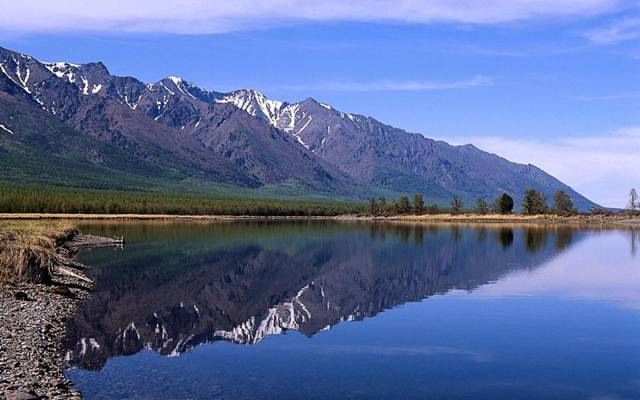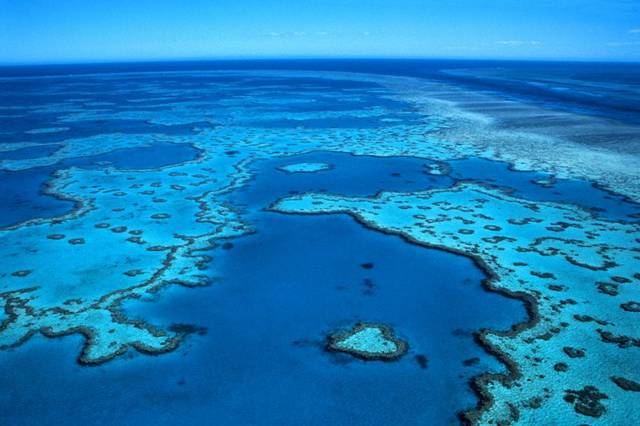Seven Wonders of the Underwater world
Seven Wonders of the Underwater world

Many lists have been made touting the seven wonders of one thing or another but one list that still needed to be created was a list describing the Top Seven Wonders of the Underwater World. In 1989, CEDAM International, an international diving association, decided to write up their own list describing what they thought were the most spectacular underwater sites in the world. And the 7 wonders of the underwater world includes,
01. The Galapagos Islands - Ecuador

Located in the Pacific Ocean, west of Ecuador are the Galapagos Islands. The islands sprouted from the earth’s crust from a sub oceanic lava vent on the ocean floor. The relatively new volcanic geology created a habitat rich with flora, fauna, and animal life that have been studied and admired by numerous travelers, scientists, and nature-lovers from all over the world.
02. The Northern Red Sea - Jordan

Some of the most beautiful coral reefs in the world are located in the Northern Red Sea. Considered by some to be the underwater “Garden of Eden,” this reef has some of the most diverse sea life in the world. Located in the Indian Sea between Asia and Africa, the Northern Red Sea spreads out over 169,000 square miles. More than 70 species of hard coral, 30 species of soft coral, over 500 species of fish including hundreds of additional marine life species classified as invertebrate call this reef home.
03. Palau - Philippines

Palau is an island nation located about 500 miles from the Philippines. Some of the most beautiful fish in the world live in these reefs. More than 350 species of hard corals, 200 species of soft corals, 300 species of sponges, and 1,300 species of reef fish call this coral reef home.
04. Lake Baikal - Russia

Lake Baikal is the second most voluminous fresh water lake in the world. Located in Siberia, Russia, the lake has an average depth of 2,442 ft and contains roughly 20% of the world’s surface fresh water. At 25 million years old and with a depth of 2442ft makes this lake the oldest and deepest lake in the world.
05. The Great Barrier Reef - Australia

The only living thing that can be seen from outer space that is larger than the Great Wall of China is the Great Barrier Reef, the largest coral reef system in the world. Located in Australia, this reef system is composed of 2,900 individual reefs and 900 islands making it 1,600 miles in length. The overall structure of the reef is composed of billions of tiny organisms, known as coral polyps. Along with the ocean, the reef creates a habitat that supports a great diversity of sea life, some of which are endangered. Because of the vast beauty of the Reef, people find it very appealing to visit thus bringing many tourist dollars to the area, which help to put in place protective measures to hopefully protect this valuable wonder for many generations to come.
06. The Deep Sea Vents - Ecuador

Deep Sea Vents otherwise known as hypothermal vents, are fissures along the ocean floor that release superheated water from below the Earth’s crust. The hot water is saturated with dissolved minerals from the crust, mostly sulfides, which crystallize to create a chimney-like enclosure around each vent. When the superheated water in the vent reaches the frigid ocean water, many minerals are released, creating the distinctive black color. The metal sulfides that are deposited can become massive sulfide ore deposits in time. The Deep Sea vents were first discovered in 1977 near the Galápagos Islands by the National Oceanic and Atmospheric Administration. They are found to exist in both the Pacific and Atlanta Ocean at an average of 2100 meters deep.
07. The Belize Barrier Reef - Belize

The second largest reef system in the world is the Belize Barrier Reef. Located on the coast of Belize, this reef is considered to be one of the best spots in the world to dive and snorkel. It is over 186 miles long and is part of the larger Mesoamerican Barrier Reef System that stretches from Cancun all the way to the Honduras, for a total of 560 miles. Only 10% of this reef has actually been researched and documented.
Comments
Post a Comment